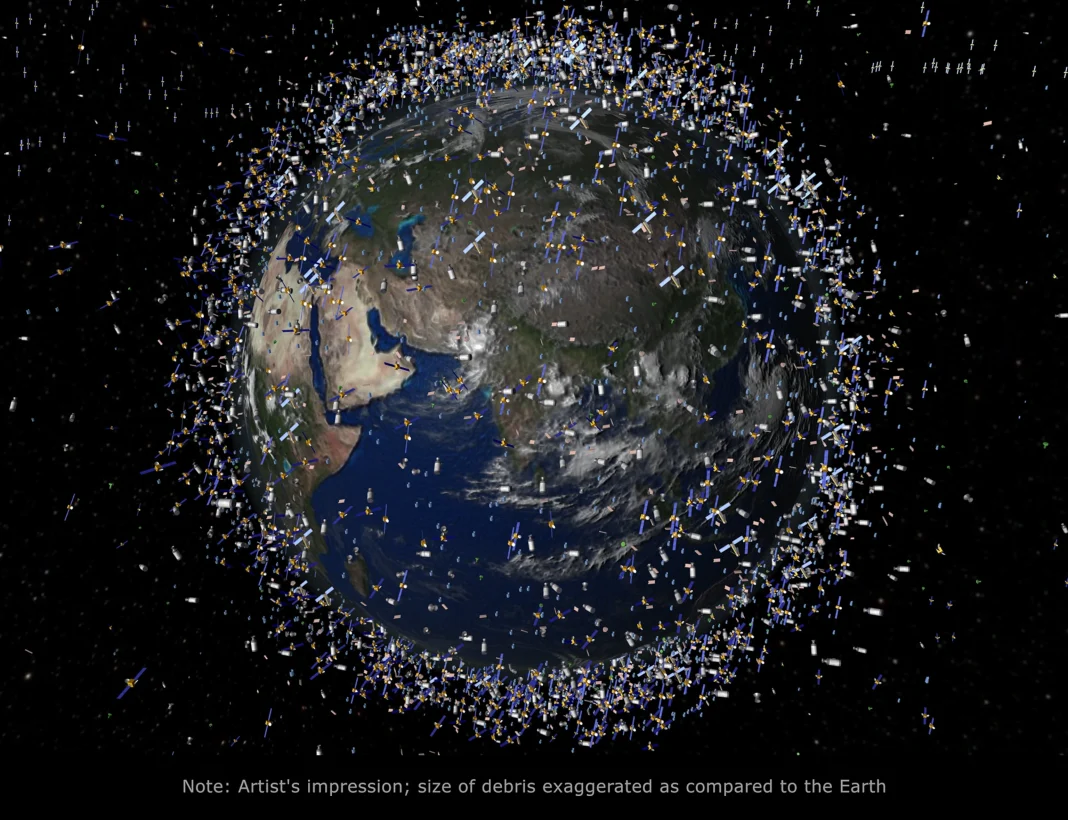As humanity extends its reach into the cosmos, the space around our planet has become increasingly cluttered. A growing cloud of space debris threatens satellites and human spaceflight. This invisible hazard, known as space junk, is comprised of defunct satellites, spent rocket stages, and fragmented collision debris, all orbiting Earth at speeds fast enough to damage or destroy vital equipment. Addressing this issue has become crucial for the safety and sustainability of our orbital activities. This article explores the innovative technologies and initiatives designed to keep our orbits safe.
The Peril Above: Understanding the Space Junk Problem
The proliferation of space debris has accelerated with the advent of satellite constellations and the increasing frequency of launches. NASA estimates that there are over 500,000 pieces of debris tracked as they orbit the Earth. These objects, if large enough, can pose a significant threat to the International Space Station (ISS), satellites, and future manned missions to the Moon and beyond.
The Kessler Syndrome, a scenario in which the density of objects in Low Earth Orbit (LEO) is high enough that collisions between objects could cause a cascade of further collisions, is an ever-present threat. This domino effect could create an impassable barrier around Earth, making space exploration and even the use of satellites unfeasible.
Tackling the Threat: Innovations in Debris Removal
Thankfully, space agencies and private companies have recognized the severity of the issue and are developing methods to mitigate these risks. Here are a few standout innovations:
Robotic Refueling and Repurposing Missions
NASA’s Restore-L and ESA’s e.Deorbit missions aim to extend the life of satellites by refueling them and even repurposing them for other tasks. By doing so, they help prevent the creation of further space debris.
Net Capture and Harpoon Systems
The RemoveDEBRIS mission has successfully demonstrated that nets can be used to capture debris, and harpoons can effectively anchor onto and then guide debris towards a destructive re-entry into Earth’s atmosphere.
Electromagnetic Tethers
Electrodynamic tethers can give defunct satellites a gentle nudge towards Earth’s atmosphere. Utilizing Earth’s magnetic field, these tethers can slow down the debris, leading to its eventual deorbit.
Lasers and Ion Beams
Ground-based lasers and ion beam shepherd satellites are also being researched. These could either slow down space debris or nudge it into a safer orbit, making sure that operational satellites are safe.
International Efforts and Policy Initiatives
Cleaning up space isn’t just a technological challenge; it’s a policy issue. The United Nations Office for Outer Space Affairs (UNOOSA) provides a forum for the development of international space law, including guidelines for debris mitigation. Additionally, initiatives like the Inter-Agency Space Debris Coordination Committee (IADC) bring together space agencies from around the world to collaborate on reducing the risks associated with space debris.
Countries are also starting to incorporate debris mitigation strategies into their space policies. The U.S., for example, has implemented the Orbital Debris Mitigation Standard Practices, which are guidelines for minimizing the creation of new debris.
The Road Ahead: Ensuring a Clean Orbit for Future Generations
The challenge of space debris is daunting, but the ingenuity of space engineers and the collaborative spirit of the international community offer hope. Technologies are advancing, policies are forming, and awareness is growing. As the space economy continues to expand, maintaining the safety of our orbital pathways is not just about protection—it’s about preserving the endless possibilities that space has to offer.
For an issue as vast as space itself, no single solution will suffice. It will take a constellation of technologies, international cooperation, and sustained commitment to keep our orbits safe and operable. As we look up at the night sky, we are reminded of our responsibility to not only explore the universe but also to safeguard the gateway to the stars.

